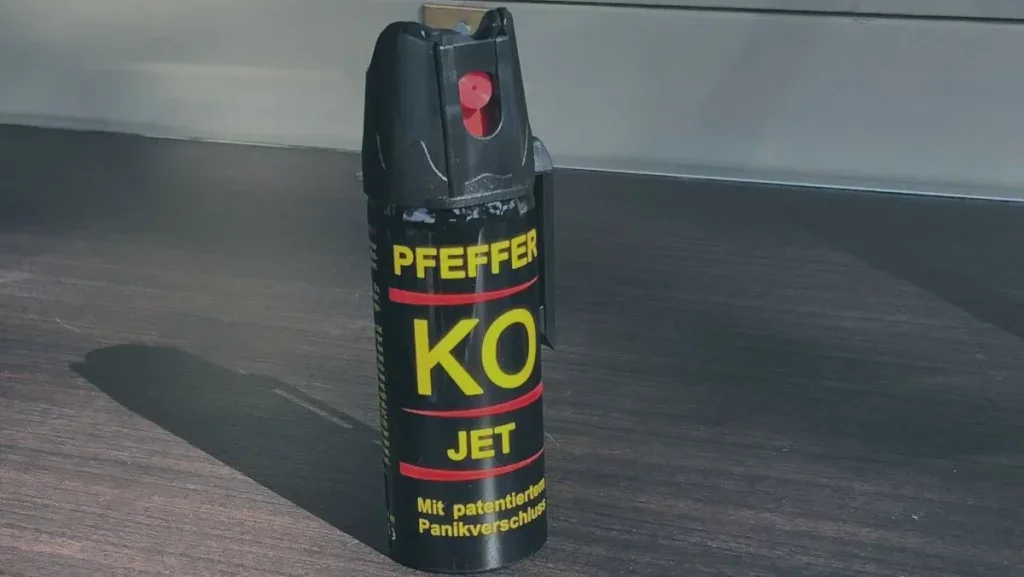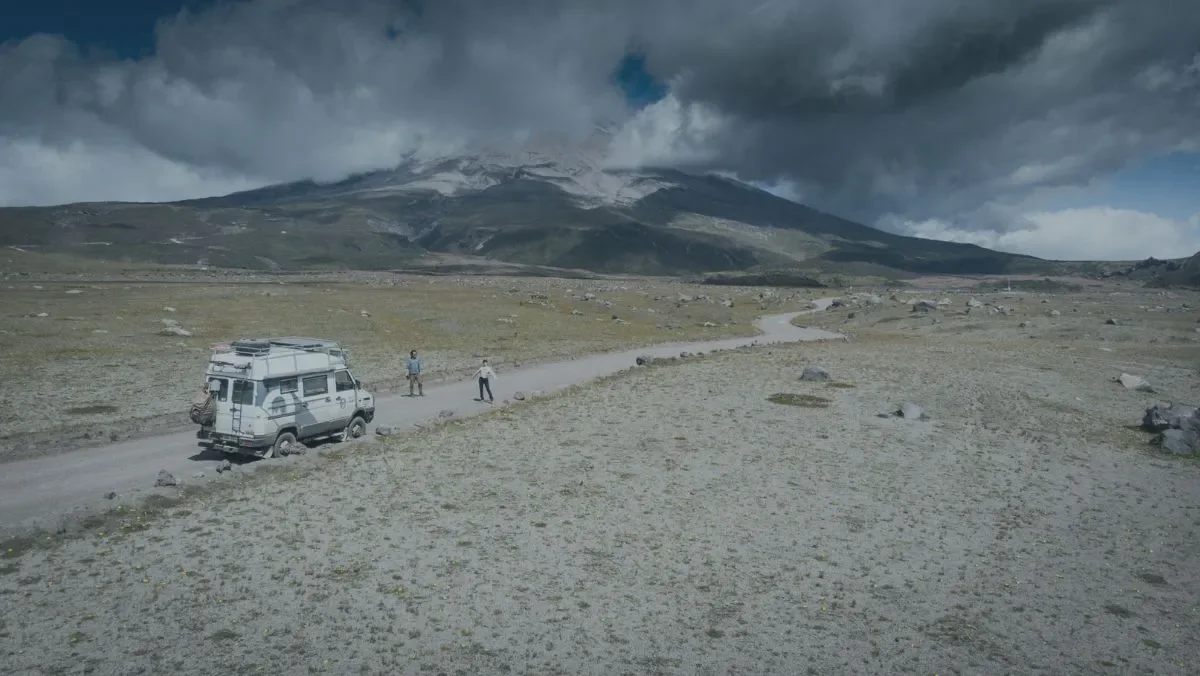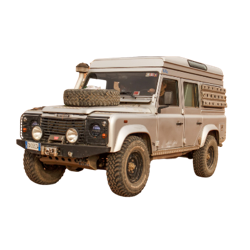As international overlanders and vanlifers, it is essential to prioritize safety during your travels. Recent incidents highlight the importance of being prepared and taking precautions, particularly when you are wild camping alone.
This article aims to provide valuable tips and guidelines on vanlife safety based on first-hand experience.
Throughout our journeys spanning six continents, we encountered only a few incidents, ranging from minor occurrences to more alarming situations such as the night when three masked individuals armed with weapons attacked us.
You can have full confidence in the tips provided below, as they are rooted in years of knowledge and firsthand experiences we have acquired throughout our journeys.
Main Principals For Staying Safe As An Overlander
1. Research Your Wild Camp Spot
- Conduct basic research about the area before choosing a wild camp spot.
- Utilize resources like iOverlander to gather information about recent check-ins and incidents in the vicinity, not just at your chosen location. (More on this later.)
- Consider reviews and recommendations from fellow travelers for added insight into safety conditions.
2. Park Strategically for Quick Escape
- When parking your van for the night, always consider your escape route.
- Point your van in a direction that allows for a swift exit, avoiding any obstacles that may block your way such as trees, bushes, or ditches.
- Be mindful of the proximity to main roads or populated areas for easier access to assistance, if needed.
3. Secure Your Van
- Always lock your van’s doors when you’re inside.
- Maintain heightened vigilance by keeping windows closed and curtains drawn during the night.
- Consider reinforcing the locks on your van’s doors for additional security measures.
4. Equip Yourself with Pepper Spray
- Carry at least one, if not two, pepper sprays with you during your travels.
- Ensure easy accessibility by consciously placing the pepper spray in a location within your van that is quick and easy to reach.
- Familiarize yourself with the proper use of pepper spray and consider practicing its usage beforehand.
- A bear-spray is not a substitute of a pepper spray (More on that later.)
- If you’re concerned about the legality of pepper sprays at your destination, remember that it’s always better to explain to the police why you carry a pepper spray than to end up in the hospital.
If you’re concerned about the legality of pepper sprays at your destination, remember that it’s always better to explain to the police why you carry a pepper spray than to end up in the hospital.
5. Attend Self-Defense Courses
- Prioritize your personal safety by attending a self-defense course before embarking on your vanlife journey.
- Refresh your skills periodically by attending reminder courses to maintain your confidence and preparedness.
- Learn basic self-defense techniques that can help you handle threatening situations effectively.
6. Keep Your Key Accessible
- Always have your vehicle’s key in the ignition or within arm’s reach.
- Ensure quick access to the driver’s seat by avoiding situations where you have to leave your vehicle to reach it.
- If your vehicle is not a van, find alternative solutions to maintain access to the driver’s seat without compromising safety. Have a plan!
7. Install Motion Sensor Lights
- Enhance the security of your van by installing motion sensor lights on the exterior.
- The presence of these lights will deter potential intruders and alert you to any suspicious activity.
- Opt for reliable, battery-powered lights to ensure functionality regardless of your location.
9. Exercise Caution When Relying on iOverlander
- For overlanders, iOverlander app is a common tool for discovering and selecting campsites, but don’t blindly trust every wild or informal campspot listed on the app.
- Positive check-ins in the app at a given spot do not guarantee ongoing safety at a location.
- Our experience in Ecuador showed that a seemingly safe campspot can turn out to be dangerous. High concentration of overlanders drew attention from locals, making us targets.
- Assumptions of safety based on past experiences can be misleading.
- Approach each wild camp spot with a discerning mindset, regardless of its reputation on iOverlander or previous campers’ experiences.
- Remain vigilant, adapt to changing circumstances, and critically evaluate the safety of each campspot.
- iOverlander is a valuable starting point for research, not the sole determinant of a campspot’s safety.
8. Additional Tips:
- Establish a network of fellow vanlifers or overlanders to share information and updates on safe wild camping spots.
- Create a routine of regularly checking local news and online forums for any recent incidents or safety concerns in the areas you plan to visit.
- Utilize technology such as GPS trackers or communication devices to stay connected and share your location with trusted contacts.
Bear Spray vs. Pepper Spray: Choosing the Right Defense Option
Many overlanders who have ventured through the North American wilderness often carry bear spray for protection against potential bear encounters.
However, using bear spray as a self-defense tool against human attackers presents some significant challenges and drawbacks. In contrast, pepper spray is a more practical and effective option in dangerous self-defense situations.
We have a full article written on the subject, but let’s explore the differences between the two here as well:
Bear Spray: Powerful but Impractical for Human Defense
- Bear spray is specifically designed to deter bear attacks and is formulated with a higher concentration of capsaicinoids (active ingredients) than standard pepper sprays.
- Its primary purpose is to create a fog-like cloud of spray, maximizing the chances of reaching the bear’s face and eyes.
- While bear spray can be potent against bears, using it against human attackers can be problematic due to its characteristics:
- Bulkier Design: Bear spray cans are larger and more cumbersome, making them harder to carry and handle effectively in urgent situations.
- Aiming Challenges: The fog-like dispersion of bear spray can make it difficult to accurately aim at a specific target, reducing its effectiveness against human attackers.
- Inhaling Chemicals: When using bear spray in close quarters, there is a risk that the person defending themselves may inhale some of the chemicals, leading to respiratory distress and impairing their ability to retaliate or escape.
Pepper Spray: Practical and Effective for Self-Defense
- Pepper spray, specifically formulated for human defense, contains a lower concentration of capsaicinoids, making it suitable and safe for use against attackers.
- Its primary function is to create a targeted stream of spray, increasing accuracy and ensuring maximum impact on the attacker’s face and eyes.
- Here are the advantages of pepper spray for personal safety:
- Compact and Portable: Pepper spray is designed to be small, lightweight, and easily carried in a pocket or attached to a keychain, providing quick access when needed.
- Ease of Use: With a streamlined design and focused spray pattern, pepper spray offers straightforward handling, allowing individuals to act swiftly in self-defense situations.
- Effective Deterrent: Pepper spray causes intense irritation, temporary blindness, and breathing difficulties, incapacitating attackers and providing a window of opportunity to escape.
Choosing the Right Defense Option
Considering the practicality, ease of use, and effectiveness, pepper spray is the preferred choice for personal defense in vanlife and overlanding situations. While bear spray may be suitable for encounters with wildlife, its bulkier design, aiming challenges, and inhalation risks make it less suitable for human defense scenarios. Investing in a compact and reliable pepper spray specifically formulated for personal defense provides a more practical and efficient means of protecting oneself in threatening situations.
By choosing the right defense option and being prepared, you can enhance your personal safety and peace of mind while enjoying the freedom and adventure of overlanding.

Conclusion
While incidents like the one experienced by us and our fellow travelers in South America are distressing, they serve as a reminder for all overlanders to prioritize safety.
Engaging in thorough research, adopting strategic parking habits, securing your van, and equipping yourself with pepper spray are all crucial steps toward a safer wild camping experience.
Additionally, attending self-defense courses, keeping keys accessible, and installing motion sensor lights can significantly enhance your security on the road. Remember, the key to safe vanlife is being proactive, aware, and prepared.
Stay informed, trust your instincts, and take the necessary precautions to ensure a memorable and secure journey.


